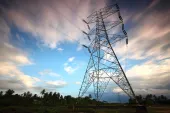
China and India renewable power use to explode over next decade
Renewables capacity expansion in China and India will serve as strong tailwinds.
The Asia Pacific’s renewable market is forecasted to expand the fastest over the coming decade thus outpacing other regions.
“We expect the Asia Pacific dominance in the global renewables market to deepen over the coming decade - as the Chinese and Indian renewables sector register robust growth in line with aims to curb emissions and improve air quality in the two countries,” BMI Research noted.
The Asia Pacific is expected to add more than 500GW of non-hydro renewables capacity until 2027, which almost twice higher than the combined 290GW addition of Western Europe and North America. As such, the region’s share of total global installed renewables capacity is likely to increase from 45% in 2017 to 51% in 2027.
The positive outlook for the region’s renewables market will be pushed by renewables capacity expansion in China and India, which is expected to reach 430GW between 2017 and 2027.
BMI Research highlighted the increase in renewables capacity in China over the last two years is due to the republic’s efforts to decarbonise the power sector. In fact, the country dominated the clean energy investment in 2017 with $132.6b.
“We expect the renewables sector to maintain its role of elevated importance in Chinese power mix diversification efforts - with the rapid expansion of the country's grid system set to improve the integration of intermittent power supplies in the country,” BMI Research explained.
Renewables expansion in India is also expected to accelerate as the country boosts its efforts to reduce reliance on coal-fired power. As such, India’s non-hydro renewables capacity will likely grow by 165% to a total of 164GW by 2027.
Globally, the total non-hydropower renewables capacity is forecasted to expand from about 1000GW to more than 1900GW between 2017 and 2027, an increase of 86%.
“We expect the solar sector to overtake the wind sector as the largest component of the renewables segment, forecasting solar to account for almost 46% of total renewables capacity in 2027, compared to 45% for wind. We expect geothermal and biomass capacity to account for a respective 0.9% and 8.4% by the end of our forecast period,” BMI Research underscored.








![Cross Domain [Manu + SBR + ABF + ABR + FMCG + HBR + ]](https://cmg-qa.s3.ap-southeast-1.amazonaws.com/s3fs-public/styles/exclusive_featured_article/public/2025-01/earth-3537401_1920_4.jpg.webp?itok=WaRpTJwE)
![Cross Domain [SBR + ABR]](https://cmg-qa.s3.ap-southeast-1.amazonaws.com/s3fs-public/styles/exclusive_featured_article/public/2025-01/pexels-jahoo-867092-2_1.jpg.webp?itok=o7MUL1oO)









 Advertise
Advertise


